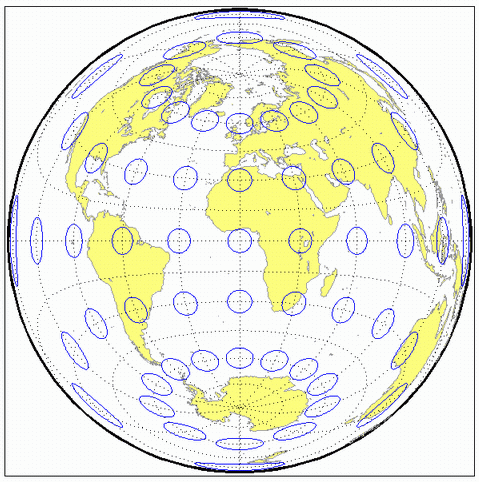eqaazim
Lambert Azimuthal Equal-Area Projection
Classification
Azimuthal
Identifier
eqaazim
Graticule
The graticule described is for a polar aspect.
Meridians: Equally spaced straight lines intersecting at the central pole. The angles displayed are the true angles between meridians.
Parallels: Unequally spaced circles centered on the central pole. The entire Earth can be shown. Spacing decreases away from the central pole.
Pole: The central pole is a point; the other pole is a bounding circle with 1.41 the radius of the Equator.
Symmetry: About any meridian.
Features
This nonperspective projection is equal-area. Only the center point is free of distortion, but distortion is moderate within 90º of this point. Scale is true only at the center point, increasing tangentially and decreasing radially with distance from the center point. This projection is neither conformal nor equidistant.
Parallels
There are no standard parallels for azimuthal projections.
Remarks
This projection was presented by Johann Heinrich Lambert in 1772. It is also known as the Zenithal Equal-Area and the Zenithal Equivalent projection, and the Lorgna projection in its polar aspect.
Mapping Toolbox™ uses a different implementation of the Lambert azimuthal equal-area projection for displaying coordinates on
axesm-based maps than for projecting coordinates using theprojfwdorprojinvfunction. These implementations may produce differing results.
Example
landareas = shaperead('landareas.shp','UseGeoCoords',true);
axesm ('eqaazim', 'Frame', 'on', 'Grid', 'on');
geoshow(landareas,'FaceColor',[1 1 .5],'EdgeColor',[.6 .6 .6]);
tissot;